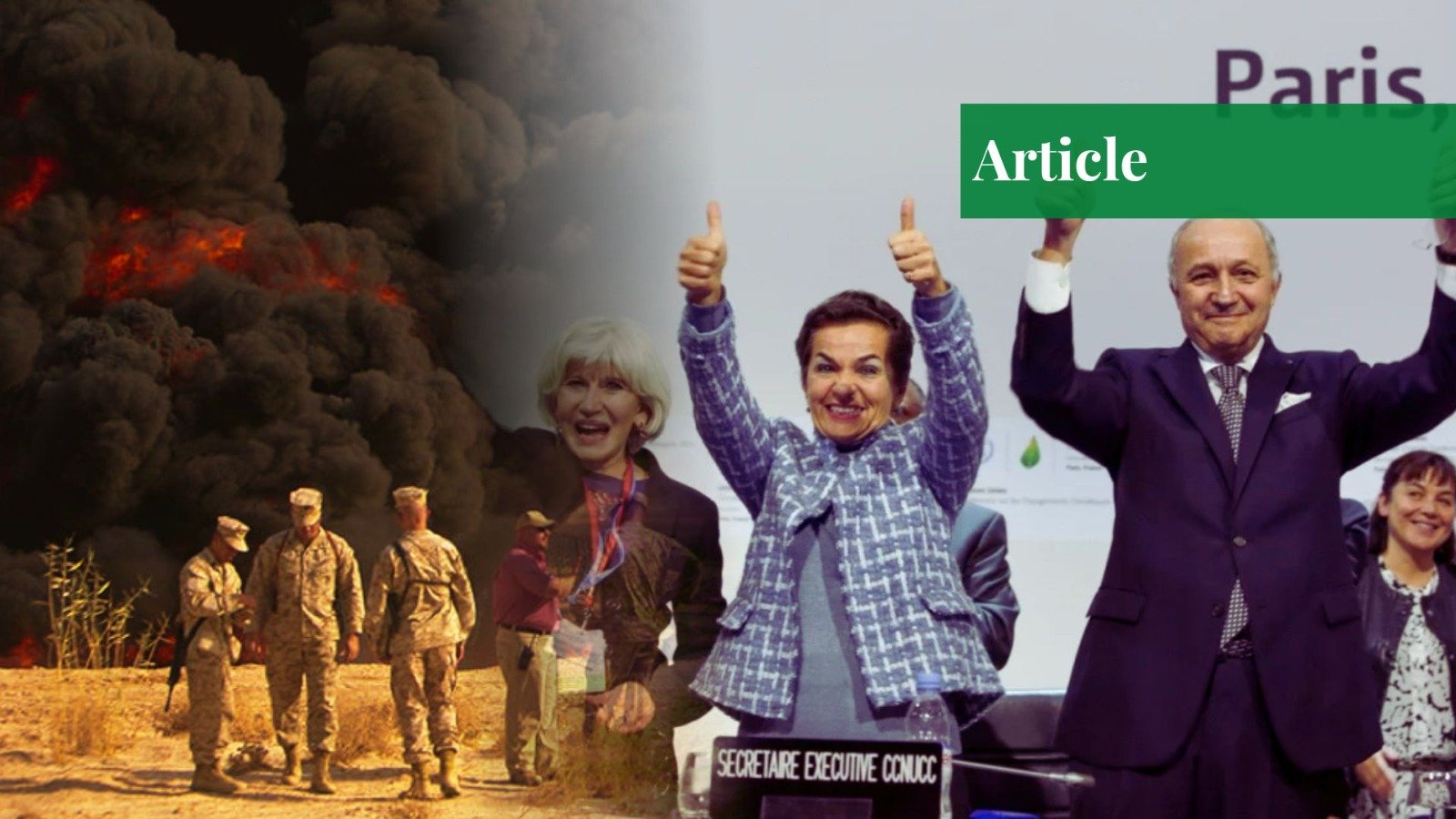In the Paris Agreement of 2015, countries were obligated to make effective and long-term plans to reduce their carbon and greenhouse gas (GHG) emissions, and to hold the increase in the global average temperature to well below 2 °C above pre-industrial levels. The Agreement was an addition to the United Nations Framework Convention on Climate Change (UNFCCC), which had already been agreed upon by countries before the Paris Agreement. The Agreement is well-known and promises to bring productive measures in the fight against climate change. But what is being neglected—or to put it more precisely, knowingly ignored—by this Agreement?
The military and warfare activities contribute a significantly devastating amount to global carbon emissions. The Paris Agreement does not compel armies to report their carbon emissions; it only leaves it to the discretion of nations. Individual countries can voluntarily decide whether they want to decarbonize military-related climate pollution. It is ironically ruinous to permit militaries to continue “business as usual” while the world is suffocating in silence. According to the UN, the year 2023 saw the highest number of active violent conflicts since WWII. Tracking of military emissions by organizations shows that if armies across the world were considered a country, they would be the fourth-biggest contributor of carbon to the Earth. A huge excuse used by many countries for their conflict-driven and military emissions is “security,” but in reality, they are already driving the globe in a direction where security is at the highest stake. A report by Al Jazeera shows that the carbon footprint of the U.S. Armed Forces alone was as large as that of a country the size of Portugal or Sweden. It is the biggest institutional emitter of carbon.
It is also important to note that the growing budgets of militaries in most countries are a direct cause of increasing military emissions. The emissions come from experiments, training, testing, and active warfare. The conflict in Ukraine and the ongoing genocide in Gaza have further worsened the climate catastrophe. Although there is no clarity on how much militaries and their operations contribute annually to climate pollution, an estimate shows that 6% of global emissions are from militaries, higher than the contribution of aviation and maritime transportation combined. To make it clearer, a fighter jet like the F-16 consumes 800 gallons of fuel per hour, while a more modern F-35 uses nearly double that at 1,500 gallons per hour. This shows that while modernization in other industries encourages climate-friendly technologies and machines, the arms industry and manufacturers are paying no attention to such innovation.
The U.S. military has over 800 bases around the globe, all of which have to be supplied with fuel, machinery, arms, and necessities. This creates a whole network and unending cycle of emissions at every step. To reduce its vulnerability, the U.S. Armed Forces has long since begun adopting renewable energy sources. But what we are talking about here is not just the current climate destruction; the toxic legacy runs deep in history and requires a structural transformation. The tendency to ignore such a major factor of climate pollution is not an oversight; it is clearly deliberate. In the Kyoto Protocol of the 1990s, strong U.S. lobbying led to the exemption of armies and related operations from the reporting of annual emissions.
It has also been reported that naval forces contaminate water sources used for drinking and agriculture. In the current genocide and human-forced famine in Gaza, Israeli forces have used white phosphorus in their attacks. Beyond this, the release of raw sewage into the environment, the destruction of sanitation systems, and the toxic gases released into the air through the bombing of buildings all represent another level of climate tragedy. Militarized borders and the patrols carried out to prevent unwanted and starving refugees from entering are just a minor addition to this larger debate.
Understandably, the operations of militaries and defense systems require large amounts of energy and fossil fuels for transportation, base operations, and training. But we must keep in mind that the destruction, fires, and damage caused by the military are immeasurable. The climate catastrophe from such activities is not included in any carbon footprint. This has to change if the world is to remain a livable place. The big elephant in the room has long been ignored and will continue to be ignored if policymakers and the countries involved in such agreements do not consider it a pressing issue. Urgent steps must be taken to stop conflict-driven climate disasters and their calamitous effects on countries not even involved in them. Militaries are working not only to cause direct deaths but also indirect ones.
If you want to submit your articles and/or research papers, please visit the Submissions page.
To stay updated with the latest jobs, CSS news, internships, scholarships, and current affairs articles, join our Community Forum!
The views and opinions expressed in this article/paper are the author’s own and do not necessarily reflect the editorial position of Paradigm Shift.
I am a law junior at LUMS with an immense interest in history and religion.



